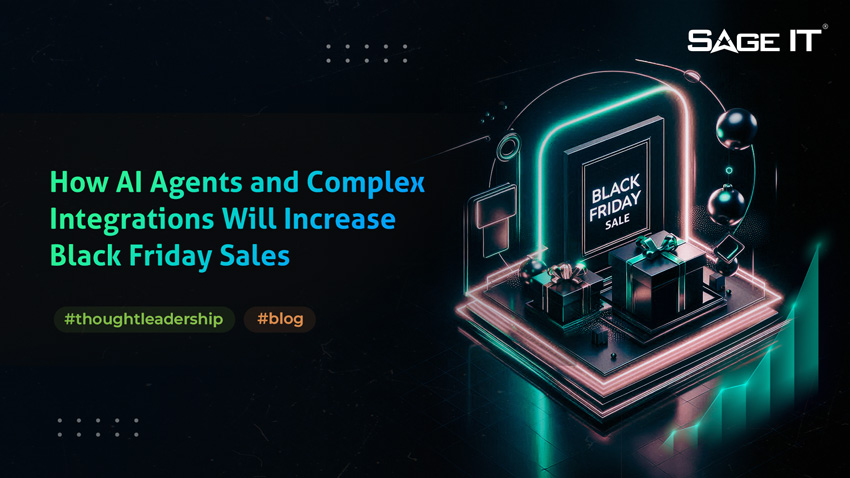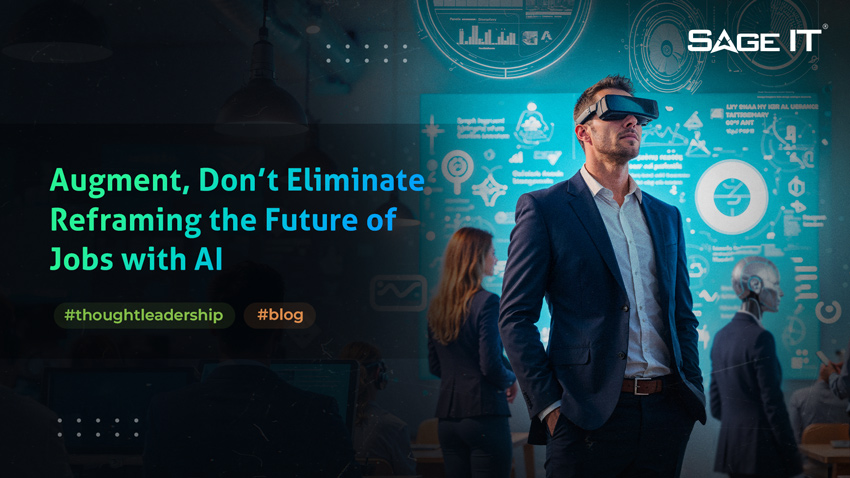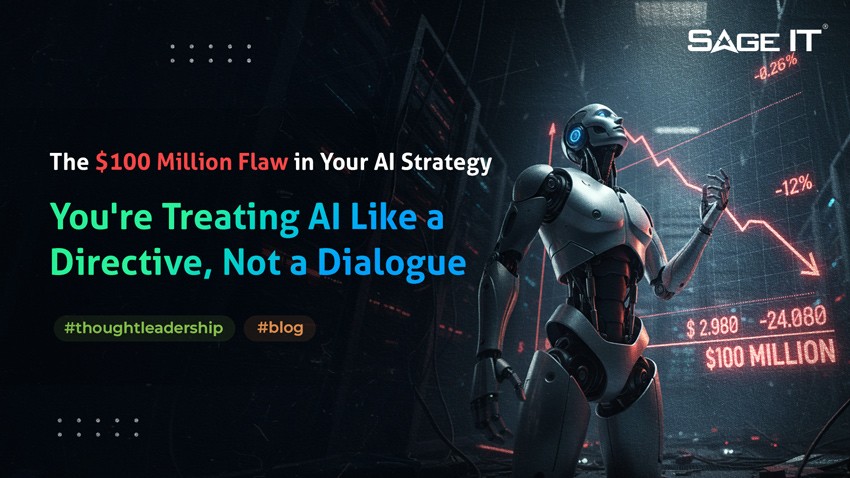Last year, Black Friday sales topped $10.8 billion, but behind that headline figure lies a harder truth: many retailers still struggled to protect their margins, forecast demand accurately, and deliver seamless customer experiences.
In my role as Vice President of Integration and AI Solutions, I’ve had a front-row seat to this technological evolution. I’ve seen first-hand how the brands that thrive during peak retail events aren’t the ones with the steepest discounts, but the ones that leverage AI agents and complex integrations to orchestrate the entire experience, from pricing and personalization to inventory and customer service.
This shift signals the end of the old “discount-at-all-costs” playbook. Today, the Black Friday winners are those building smarter, connected ecosystems where data flows freely, decisions happen in real time, and every customer touchpoint feels personal.
Why Traditional Black Friday Tactics Are Failing Today
For years, the Black Friday playbook was simple: offer deeper discounts, drive traffic, and hope the surge covered the margin hit. But in today’s hyper-competitive retail landscape, that model is broken.
Where Retailers Fall Short
Black Friday success no longer belongs to the brands with the steepest markdowns. It belongs to those who can orchestrate every moving part of the experience, pricing, demand forecasting, personalization, and fulfillment, in real time. And that’s where AI agents and complex integrations change the game.
How AI Agents Power Black Friday Success
Black Friday has always tested the limits of retail systems. But in 2025, the winners aren’t the brands offering the steepest markdowns, they’re the ones orchestrating every customer interaction and operational decision in real time, powered by AI agents.
Dynamic Pricing Intelligence
The Shift: Traditional discounting strategies treat every shopper the same, eroding margins without accounting for intent or context.
With AI:
- Agents monitor competitor pricing, supply levels, and demand signals around the clock.
- They identify high-intent buyers and serve personalized flash deals or price adjustments at the exact moment purchase likelihood peaks.
- For example, if inventory is limited but demand is spiking, AI can nudge prices up slightly while offering micro-discounts to price-sensitive segments, maximizing both conversions and margins.
Hyper-Personalized Product Recommendations
- Agents analyze browsing history, purchase patterns, loyalty tier, and even wishlist activity to surface relevant, in-the-moment suggestions.
- Beyond onsite, recommendations flow into email, SMS, and social retargeting campaigns, ensuring consistency across touchpoints.
- Example: A shopper browsing winter boots might instantly see matching accessories, a bundled coat offer, or early access to VIP deals.
Predictive Inventory & Demand Forecasting
- Agents incorporate real-time signals (social chatter, weather, influencer trends, competitor pricing, and macroeconomic factors).
- They continuously refine forecasts, helping teams align supply with demand dynamically.
- Example: Anticipating a surge in gaming consoles after a celebrity endorsement, AI can trigger inventory reallocation before competitors react.
Real-Time Segmentation & Predictive Marketing
- Segments evolve in real time, updating with every click, abandoned cart, or social interaction.
- Predictive algorithms identify likely churners, VIP buyers, or bargain hunters.
- Brands can then trigger contextual actions, like offering limited-time discounts to at-risk customers or early access to loyalists.
Conversational AI Agents (24/7 Virtual Associates)
- Agents act as intelligent store associates: guiding product discovery, answering FAQs, assisting with checkout, and handling post-purchase queries.
- They scale instantly when traffic surges, delivering personalized, human-like support across devices and channels.
- Example: During checkout, a shopper hesitates over sizing. The AI agent instantly pulls fit data, compares reviews, and suggests the best option, preventing cart abandonment.
AI-Enhanced On-Site Search & Discovery
- Natural language processing (NLP) interprets intent, even in long, conversational queries like “black leather boots under $150 with wide fit.”
- AI boosts visibility of high-performing or strategic products while tailoring results to individual users.
- Search becomes a conversion engine, not a navigational tool.
The Hidden Engine: Complex Integrations That Make AI Work
You can’t deploy AI agents without a backbone that holds them together. Complex integrations are what make real-time orchestration possible, across pricing, personalization, inventory, and customer touchpoints.
- Your ecommerce platform, inventory system, and CRM share data in real time.
- Marketing automation uses that data to trigger tailored email, SMS, and social campaigns instantly.
Your analytics engine stitches it all together, surfacing insights and feeding AI agents with the context they need to act.
Lean Integration Philosophy
Adopting a lean integration model means approaching integrations as an ongoing, sustainable process, not a one-time IT project. It demands:
Integration Enables Real-Time AI Power
Without tight integration:
- AI can’t access up-to-the-minute stock levels or customer behavior data.
- Your pricing engine is blind to competitor actions.
- Personalization occurs in silos.
- Service falters during traffic surges.
With robust integration:
- AI pricing modules automatically adjust offers based on inventory and competitor pricing.
- Personalized recommendations reach customers wherever they are—email, app, web.
- Inventory rebalances quickly if demand spikes.
- Customer support via AI agents feels cohesive, even across channels.
How AI and Integrations Powered Black Friday Sales Success
A leading retailer approached us with following challenges:
- Inventory management that couldn’t keep up with demand swings.
- Generic discounts eating into profits
- A marketing stack struggling to deliver truly personalized experiences during peak season.
The result was lost sales, high operational stress, and missed opportunities to build long-term customer loyalty.
Our Approach
Our team re-architected their Black Friday operations around a unified integration backbone. We connected their ecommerce platform, inventory management, CRM, and marketing automation into a seamless ecosystem.
On top of this integration layer, we deployed AI agents to:
- Optimize pricing dynamically in real time, adjusting to competitor activity and shifting demand.
- Deliver personalized recommendations across email, site, and mobile, tailored to each shopper’s preferences and behavior.
- Improve inventory forecasting, using machine learning models to predict demand spikes more accurately and rebalance stock before bottlenecks occurred.
The Results
The impact was immediate and measurable:
- 15% increase in online sales during Black Friday.
- 10% uplift in average order value (AOV) from targeted recommendations and upsells.
- Significant boost in customer satisfaction scores, thanks to fewer stock-related frustrations and more relevant shopping journeys.
Is Your Organization Ready?
Here’s the truth: Black Friday wins aren’t built on last-minute discounts—they’re built on smart systems that know how to adapt, learn, and scale.
You’ve seen how AI agents, when implemented the right way, can handle the heavy lifting, whether it’s pricing, inventory, or customer experience. But here’s the catch: ideas alone don’t move the needle. Action does.
That’s where we step in. Our team helps retailers implement AI agents that plug directly into your existing stack and start delivering real results, fast. Think dynamic pricing that actually protects margins, inventory forecasting that sees the spikes before they hit, and customer agents that make every shopper feel like a VIP.
If you’re ready to move beyond the pressure of Black Friday and start building a smarter, AI-driven retail engine, let’s talk about making it happen.












